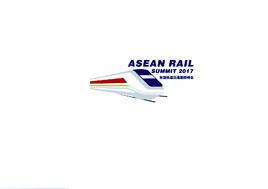峰會背景
作為全球經濟成長最快的區域,東南亞新興經濟體備受世界矚目。在全球經濟增速放緩大背景下,東協和印度經濟成長突飛猛進,預計東協2017年的經濟增速將達到4.7%。據亞洲開發銀行預估,至2030年東南亞基礎設施投資所需資金將達31470億美元。
隨著東協十國《東協互聯互通總體規劃2025》和中國“一帶一路”倡議發布,軌道交通建設合作在東南亞地區普遍展開。據統計,區域內在建及擬建鐵路項目總里程超過40000公里。“泛亞鐵路網”建設更深化了東協與周邊國家的合作。東協國家正積極尋求在軌道交通市場、資金、技術方面的國際合作。
中國軌道交通企業經過多年的國內積累和海外發展,憑藉成本、技術、效率等綜合優勢,逐步贏得了國際市場的認可,與東協國家合作開展的雅萬高鐵、中老鐵路、中泰鐵路等項目成為中國軌道交通企業“走出去”的成功實踐。據統計,中國製造的機車車輛、城市軌道交通裝備已經出口全球80多個國家和地區,其中東協、美國、阿根廷和南非為前4大出口市場。中國鐵路裝備首個海外製造基地——東協製造中心已於2015年在馬來西亞建成投產。
英文版
As the world's fastest growing region, Southeast Asia's emerging economies continuously captured worldwide attention. Against the global economic slowdown, the ASEAN and India however are growing rapidly. Especially the ASEAN countries, whose economy is expected to grow by 4.7 percent in 2017. According to the Asian Development Bank, infrastructure investment in Southeast Asia is estimated to reach $3147 billion by 2030.
Rail infrastructure cooperation has been extensively conducted within Southeast Asian countries under the release of ASEAN’s Master Plan on ASEAN Connectivity 2025 (MPAC2025) and the China’s initiative of One Belt One Road. It is estimated that the total planned and under-constructed rail projects are over 40,000 kilometers. The Trans-Asian Railway Network construction further deepen the bilateral cooperation between ASEAN and its neighbors. The ASEAN countries are now seeking international cooperation in the fields of rail financing and technology to boost the transportation infrastructure development.

